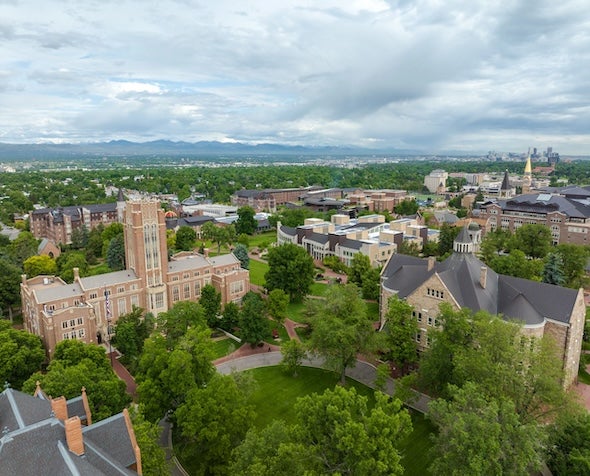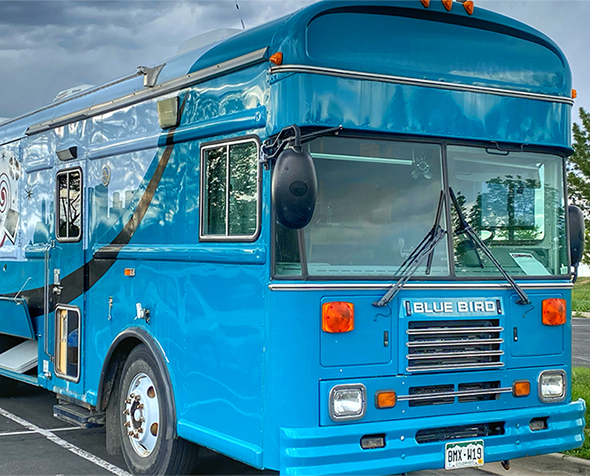DU Partners with DPS Title 1 High Schools to Create Teacher Pipeline
The Morgridge College of Education’s Grow-Your-Own Initiative offers a series of experiences to inspire the next generation of teachers.

The Morgridge College of Education is offering Denver Public Schools (DPS) high school students a pathway into the career of teaching through a new Grow-Your-Own (GYO) Teacher Initiative for first-generation and Students of Color in DPS Title 1 schools.
William Anderson, director of teacher education and clinical assistant professor at Morgridge, is leading the program, which is made possible by a $150,000 grant from the I.A. O’Shaughnessy Foundation.
“Most Grow-Your-Own programs take students from high school right into universities or colleges that offer a teaching licensure and a degree at the undergraduate level,” Anderson says, noting that Morgridge offers a graduate-level teacher education program. “If we can’t have students enter our teacher education program directly, we want to create experiences that inspire them to consider teaching.”
DU’s program includes partnerships with four DPS high schools and a three-pronged approach—or three pathways—for students to experience teaching.
The first pathway is providing students with sound teaching instructional practice for tutoring elementary school students. “It’s not just a kid reading to another kid. It’s about equipping students with teaching skills to achieve meaningful results,” says Anderson.
The second pathway is through EdConnect and TREP, which are Grow-Your-Own efforts through the district and the state. EdConnect is a district-wide educational pathway that seeks to develop current DPS students into educators of tomorrow. Teacher Recruitment Education and Preparation (TREP) is a Colorado Department of Education program that creates the opportunity for qualified students in an educator career pathway to concurrently enroll in postsecondary courses and earn college credit, tuition free.
Participating students are invited to DU on the days that the district is having professional development for their teachers, Anderson says. “We’re hosting professional development for those future teachers and giving them instructional practice, really elevating the work that they’re doing so they can see what it’s like to be a teacher.”
The third pathway is to get students excited about becoming STEM educators by providing them with experiences or field trips where they can learn more about the STEM field. For example, the first outing is to the Downtown Aquarium where the students will dissect a squid and learn about marine biology from shark experts. When the students go back to their schools, they will take on the role of teacher and share their experience with their classmates.
Anderson hopes to have up to 100 students participate in the three different pathways. In December, all students will come to DU for an education justice symposium, where they will explore how student narratives and research can address educational injustices.
Morgridge professors and graduate students will lead sessions on various topics including gentrification, school models and standardized testing. At the end of the day, the students will choose which topic they want to engage in during a second session, which will be held in February or March.
“When they come back for the second session, they'll go directly to that professor and those grad students who have already prepared literature reviews on their topic for them to start working through a design thinking protocol,” Anderson says.
For example, if the topic is school models, students will talk about their own school model, unpack what’s good and not so good about that model, and explain what their ideal school model would look like and how it would align with what research says is best.
During the final session in May, students will develop a “disruptor showcase” where they explain how their idea is a potential disruptor to educational injustice. They will present their solutions to an audience that includes family, Morgridge faculty and representatives from the O’Shaughnessy Foundation. Anderson hopes the foundation will continue funding the program while Morgridge seeks additional funding to sustain it for years.
“We want the foundation to see the meaningful work students are doing and to feel excited about continuing their support,” says Anderson. “Our goal is to establish lasting resources to keep this program growing.”










